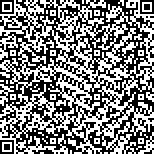黄旭升,郭晓玲,陈朝晖,刘淑贤,蒲传强,沈定国.肘管综合征的临床及电生理特点分析[J].中华物理医学与康复杂志,2004,(5):
扫码阅读全文

|
| 肘管综合征的临床及电生理特点分析 |
|
| |
| DOI: |
| 中文关键词: 肘管综合征 神经传导 肌电图 |
| 英文关键词: Cubital tunnel syndrome Nerve conduction Electromyography |
| 基金项目: |
|
| 摘要点击次数: 1005 |
| 全文下载次数: 1321 |
| 中文摘要: |
| 目的探讨肘管综合征(CTS)患者的临床及电生理特点。 方法总结150例CTS患者(患者组,共173侧肢体受累)的临床及电生理资料,并与76例正常人(对照组)的电生理数据进行分析比较。 结果肌电图示CTS患者分别有114侧及91侧肢体出现小指展肌纤颤电位及正向电位,第一骨间背侧肌分别有50侧和48侧出现纤颤电位及正向电位。尺神经运动传导速度肘上至肘下段为(34.6±9.75)m/s,动作电位潜伏期较对照组延长、波幅降低,感觉神经传导速度为(45.99±9.65)m/s,与对照组比较,差异有极显著性意义。患者组共有37侧肢体在尺神经运动传导检测时未引出波形,有89侧肢体在感觉传导检测时未引出波形。 结论神经电生理检测为诊断肘管综合征的可靠手段,可早期确诊及准确定位尺神经受损部位及损伤程度,为提高其敏感性及定位的准确性,在电生理检查方法上还需更进一步探讨。 |
| 英文摘要: |
| Objective To investigate the clinical and electrophysiological characteristics of cubital tunnel syndrome (CTS). MethodsThe clinical and electrophysiological data of 150 cases of CTS involving 173 upper limbs (UL) were collected. And the electrophysiological data of 76 healthy subjects were also collected. The data of EMG between the two groups were compared and analyzed statistically. ResultsFibrillation potentials were detected in 114 and 91 UL, respectively, in abductor digiti minimi, and positive sharp waves in 50 and 48 UL, respectively, in the first dorsal interosseous muscle. The average conduction velocity of the ulnar nerve was decreased, with motor conduction velocity(MCV) from above to below elbow 34.6±9.75 m/s and sensory conduction velocity (SCV) 45.99±9.65m/s; the motor latency was prolonged and amplitude of motor action potential decreased. There was statistical difference between the patients and the healthy control groups (P<0.001). The motor and sensory potentials could not be elicited in 37 and 89 of the 173 involved limbs, respectively. ConclusionElectrophysiological examination could provide reliable evidence for early diagnosis of CTS,and information for the exact location and degree of the ulnar nerve lesion. |
|
查看全文
查看/发表评论 下载PDF阅读器 |
| 关闭 |
|
|
|